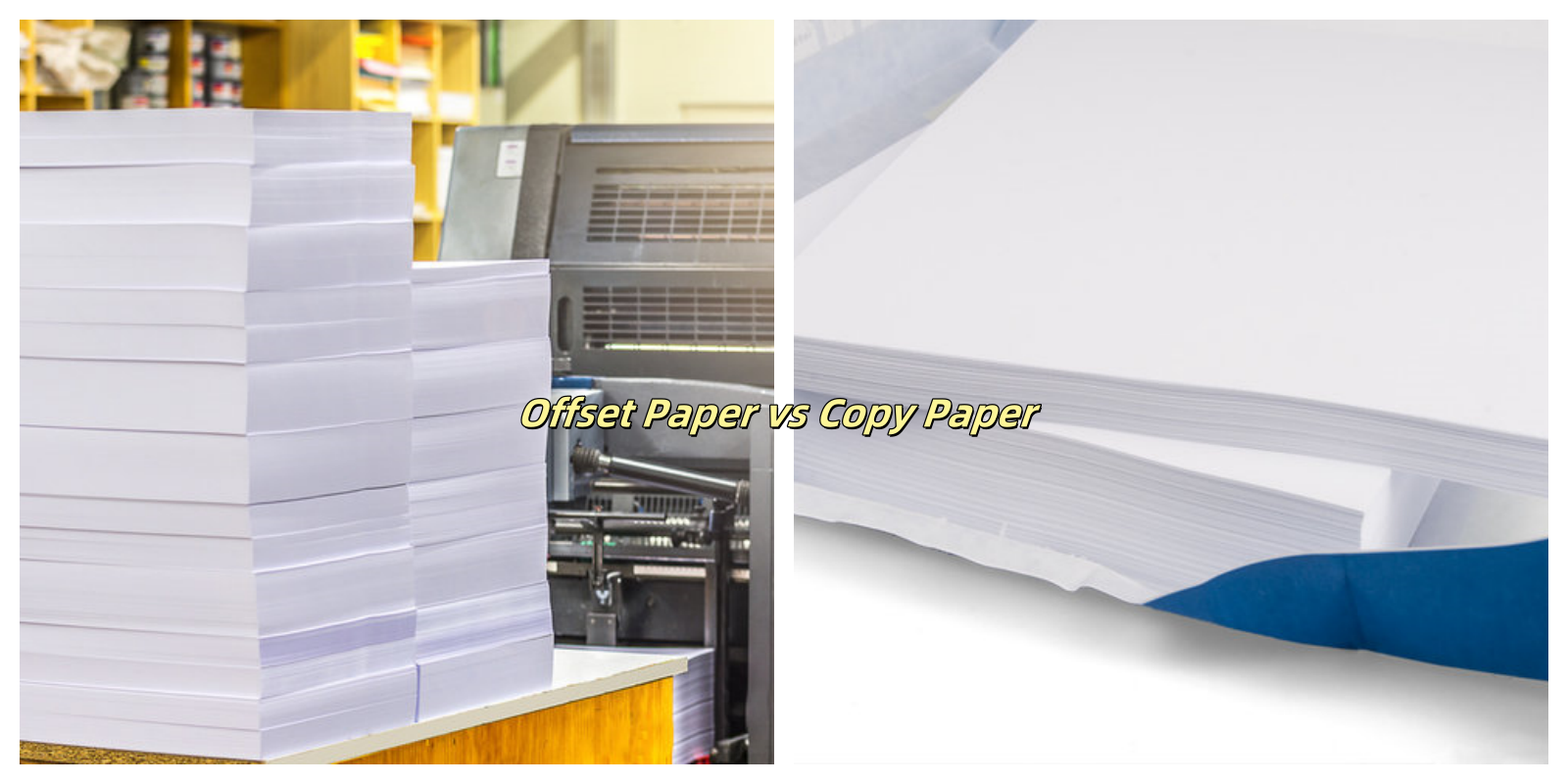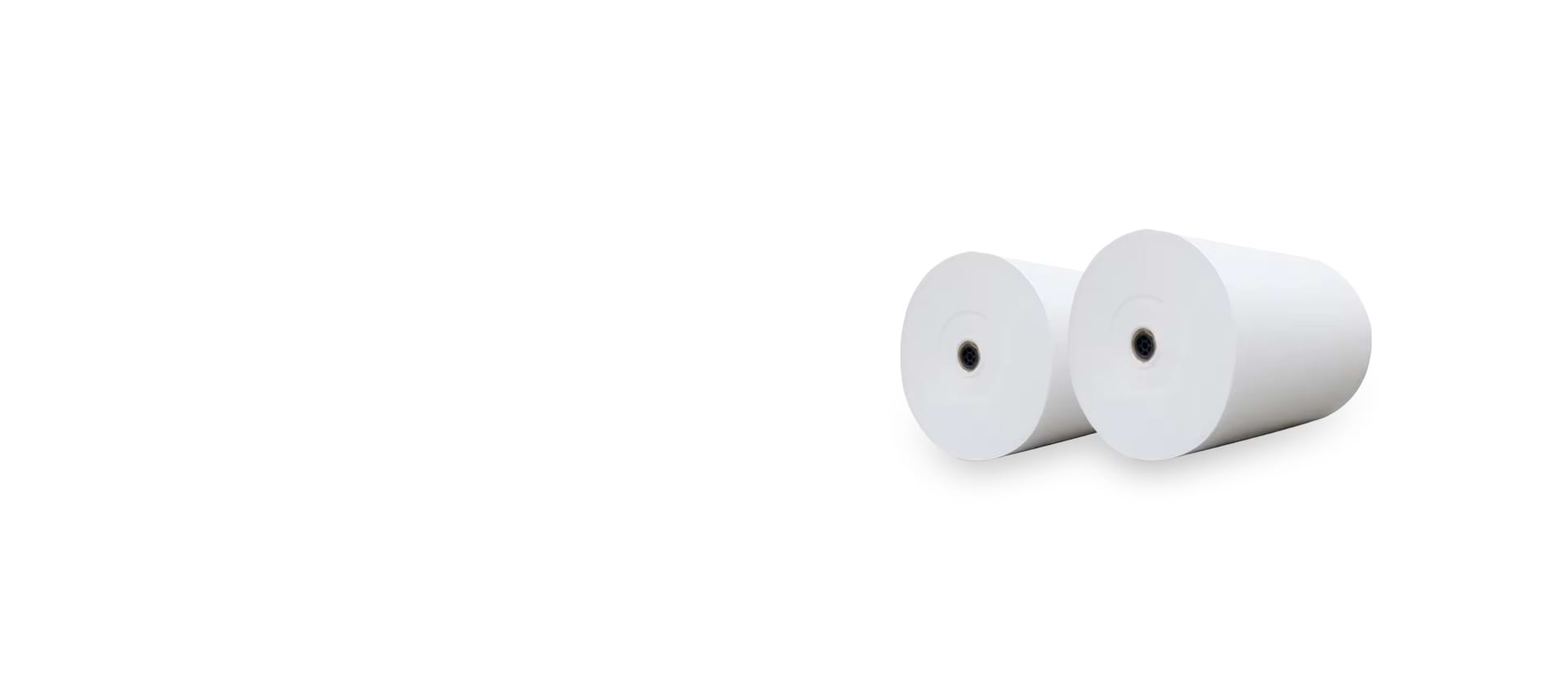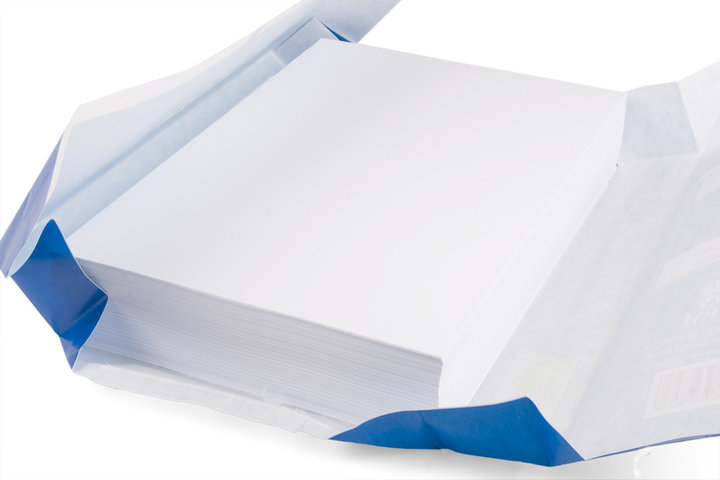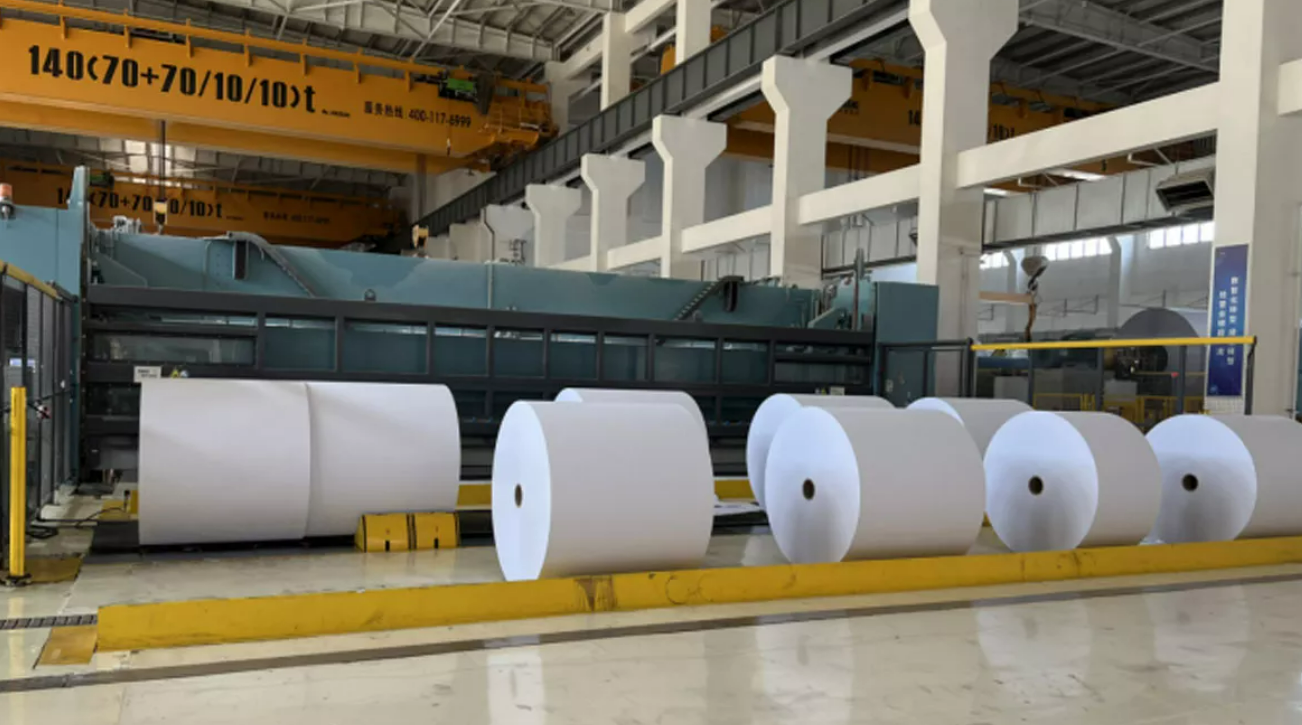
Choosing between Offset Paper and Copy Paper can be tricky. While both are common printing materials, they have distinct characteristics—Offset Paper is ideal for high-quality commercial printing, while Copy Paper is designed for everyday office use. So, which one suits your needs best?
In this post, we’ll explore the key differences between Offset Paper vs Copy Paper, including print quality, cost, and best applications. Whether for books, brochures, or office documents, this guide will help you make the right choice.
Understanding Offset Paper and Copy Paper
What is Offset Paper?
Offset Paper is a high-quality, durable printing paper used primarily in commercial printing. It has a smooth surface, allowing for crisp text and vibrant images. Unlike standard office paper, it is designed to handle large-scale, high-resolution prints with consistent results.

How Offset Paper is Manufactured
Offset Paper is made from high-quality wood pulp, refined for durability. During production, manufacturers use either a coated or uncoated finish. Coated Offset Paper gets an extra layer that enhances smoothness and ink absorption, while uncoated types retain a natural texture, offering better writability.
Coated vs. Uncoated Offset Paper
| Feature | Coated Offset Paper | Uncoated Offset Paper |
| Surface Texture | Smooth, glossy, or matte | Slightly rough, more natural feel |
| Ink Absorption | Ink sits on the surface for sharper details | Ink absorbs into the paper, reducing sharpness |
| Best For | Magazines, brochures, posters | Books, newspapers, documents for writing |
| Durability | Resistant to moisture and smudging | More porous, can absorb moisture over time |
| Writability | Less suitable for writing due to coating | Excellent for writing and stamping |
Common Uses of Offset Paper
Offset Paper is used in:
Commercial printing: Magazines, brochures, catalogs, and posters.
Book printing: High-end novels, textbooks, and journals.
Stationery: Letterheads, envelopes, and professional documents.
Offset Paper and Printing Technologies
Offset Paper is specifically designed for offset printing, a process where ink is transferred from a plate to a rubber blanket before reaching paper. It provides excellent color accuracy and sharp images. However, it may not work well in everyday inkjet or laser printers, as those require quick-drying paper.
What is Copy Paper?
Copy Paper is the most common office paper, designed for everyday printing and copying tasks. It is lightweight, uncoated, and optimized for quick ink absorption, making it ideal for text-heavy documents.

How Copy Paper is Manufactured
Copy Paper is made from wood pulp processed into thin, lightweight sheets. It undergoes chemical treatments to improve ink adhesion, prevent smudging, and enhance smoothness. Unlike Offset Paper, it lacks coating, which allows ink to dry quickly but limits its ability to produce high-resolution images.
Key Features of Copy Paper
Uncoated, smooth texture: Prevents ink smearing and ensures clean text output.
Lightweight (typically 70–90 GSM): Thin enough for easy handling, yet strong enough for double-sided printing.
Designed for speed: Works best with fast-processing printers and copiers.
Common Uses of Copy Paper
Copy Paper is widely used for:
Office printing: Reports, memos, invoices, and presentations.
Schoolwork: Assignments, worksheets, and handouts.
Home printing: Personal letters, to-do lists, and forms.
Compatibility with Printing Technologies
Copy Paper is designed for laser and inkjet printers, offering clean and sharp text output. However, it may not handle large ink coverage well, making it unsuitable for high-resolution image printing.
| Feature | Offset Paper | Copy Paper |
| Surface Finish | Smooth, available in coated/uncoated | Uncoated, slightly rough |
| Best For | Books, brochures, high-quality prints | Office documents, everyday use |
| Printing Methods | Offset printing | Laser, inkjet, and copier printing |
| Ink Absorption | Slower, sharper details | Fast, less detailed |
| Cost | More expensive | Affordable |
Offset Paper vs. Copy Paper: Key Differences
Structure and Production Process
Offset Paper: Made from high-quality wood pulp with longer fibers, offering better durability and tear resistance. The production process includes refining and additional treatments to enhance ink absorption, strength, and print clarity.
Copy Paper: Manufactured from standard wood pulp with shorter fibers, making it lightweight and flexible. It is designed for office use, supporting high-speed printing, efficient toner adhesion, and quick-drying performance.
Coatings in Offset Paper: Available in coated and uncoated types. Coated paper has a smooth surface that enhances ink sharpness and color vibrancy, making it ideal for high-resolution images, brochures, and magazines.
Paper Thickness and Weight (GSM)
Offset Paper: Typically ranges from 60 to 120 GSM, with thicker options for premium printing. Higher GSM provides better ink retention, prevents show-through, and enhances paper durability for long-term storage.
Copy Paper: Usually falls within 70 to 90 GSM, striking a balance between cost-effectiveness and functionality. It is thin enough for bulk printing but maintains a smooth surface for clear text and basic images.
Impact of Thickness: Thicker paper improves print clarity, reduces ink bleed-through, and increases durability. However, it adds weight and cost, making thinner paper a better choice for high-volume printing and daily office use.
Surface Texture and Finish
Offset Paper:
Often has a coated surface that reduces ink spread, improving color accuracy and print sharpness.
Feels smoother to the touch, enhancing readability and making it suitable for professional prints, magazines, and marketing materials.
Copy Paper:
Always uncoated, allowing for faster ink absorption and making it ideal for laser and inkjet printing.
Slightly rougher texture improves writing experience, making it more practical for documents requiring handwritten notes or signatures.
Print Compatibility and Performance
Offset Paper:
Best suited for offset printing presses, ensuring consistent high-quality output in commercial printing.
Coated versions require longer drying times but deliver sharper images, vivid colors, and superior detail for professional use.
Copy Paper:
Optimized for laser printers, inkjet printers, and photocopiers, providing smooth feeding and minimal paper jams in office environments.
Quick-drying properties reduce smudging, making it reliable for high-speed document printing in busy workplaces.
Double-Sided Printing:
Offset paper minimizes ink bleed-through due to its higher opacity, making it ideal for duplex printing without losing clarity.
Copy paper is thinner and may allow ink impressions to show on the reverse side, which can affect readability.
Durability and Longevity
Offset Paper:
Resists aging and yellowing over time due to its higher-quality fiber composition, making it suitable for archival use.
Coated variants offer increased resistance to moisture, preventing warping and maintaining print quality for years.
Copy Paper:
More prone to yellowing and degradation, especially when stored for long periods in humid or fluctuating environments.
Less resistant to external factors like heat and moisture, which can cause curling or ink fading.
Archival Quality:
Offset paper is the better choice for long-term document storage, ensuring that prints remain crisp and intact.
Copy paper works well for short-term use, such as office memos, temporary records, and disposable handouts.
Cost and Affordability
Comparison Table: Key Differences
| Feature | Offset Paper | Copy Paper |
| Material | High-quality wood pulp, longer fibers | Standard wood pulp, shorter fibers |
| GSM Range | 60-120 GSM | 70-90 GSM |
| Surface Finish | Coated or uncoated | Uncoated |
| Best Printing Methods | Offset press, professional printing | Laser, inkjet, photocopiers |
| Ink Absorption | High ink retention, slower drying | Quick drying, absorbs more ink |
| Double-Sided Printing | No ink bleed-through | Possible ink impressions |
| Durability | Resistant to aging and yellowing | Less durable, may yellow over time |
| Cost | More expensive | Budget-friendly |

Choosing the Right Paper for Different Uses
Office and Everyday Printing
Copy paper is the go-to option for everyday office tasks due to its affordability and reliability. It’s lightweight and designed for high-volume printing, making it ideal for reports, memos, and presentations. The thin texture ensures smooth printer feeding, minimizing the risk of jams. For double-sided printing, copy paper offers enough thickness to prevent bleed-through, making it a practical and efficient choice for everyday office needs.
Commercial and High-Quality Printing
Offset paper is preferred for high-quality commercial printing due to its superior ink absorption. This makes it the ideal choice for printing magazines, brochures, and catalogs, as it produces sharp images and vibrant colors. The paper’s smooth surface enhances the overall quality of the print, making it essential for professional-grade projects. Depending on the type of project, you can choose between coated offset paper for glossy finishes or uncoated paper for a more natural, matte look.
Design and Creative Projects
For designers, offset paper is often the preferred choice as it brings out the richness of colors and details in creative projects. Its smooth texture helps deliver sharp, crisp prints that are essential for marketing materials like posters and brochures. On the other hand, copy paper is a budget-friendly option for DIY projects or personal creative work. While it doesn't match the quality of offset paper, it’s still a reliable choice for sketches and simple designs.
Offset Paper vs Copy Paper: How to Make the Right Choice?
Choosing Based on Budget
| Paper Type | Cost | Best For | Why Choose It |
| Copy Paper | Low | Everyday office printing | Affordable and suitable for high-volume text-based printing. |
| Offset Paper | High | Professional marketing materials | Delivers sharp images and vibrant colors for high-quality prints. |
| Cost Efficiency | Best for bulk printing | Internal documents and drafts | Keeps printing costs low while ensuring functionality. |
| Long-Term Value | More durable prints | Publications and promotional materials | Ensures lasting quality for stored or frequently handled documents. |
Choosing Based on Printing Needs
Office Printing
For daily office use, copy paper is the best option. It works well for standard text documents and spreadsheets. It feeds smoothly through printers, preventing jams, and supports high-speed printing. While it lacks the thickness and quality for detailed graphics, it’s more than sufficient for routine tasks like meeting notes, invoices, and administrative paperwork.
Professional Printing
Offset paper is essential for commercial printing, where quality matters. It provides better ink absorption, resulting in sharper images and richer colors. This makes it ideal for marketing materials, magazines, and books. Unlike copy paper, it maintains clarity even with complex designs. For businesses that rely on professional-looking prints, offset paper ensures superior results.
Choosing Based on Durability and Storage
Short-Term Use
Copy paper is best for documents that won’t be stored long-term. It’s great for drafts, internal reports, or temporary notices. However, it’s thin and prone to yellowing or curling over time, especially in humid environments. If the print isn’t meant to be archived, copy paper remains a cost-effective choice for temporary use.
Long-Term Storage
Offset paper is better suited for long-term use. Its higher-quality composition makes it resistant to fading, ensuring documents retain their clarity over time. This is important for printed materials like legal contracts, company reports, or marketing brochures. If you need prints that stay in excellent condition for years, offset paper is the smarter investment.
Recommendations from Printing Industry Experts
Experts recommend choosing paper based on the purpose of the print job. Copy paper is ideal for offices handling large print volumes at low costs. However, when image quality and durability are priorities, offset paper is the superior choice. For businesses producing marketing materials or client-facing documents, investing in offset paper ensures professional and lasting results.

Conclusion
Offset Paper and Copy Paper serve different purposes. Offset Paper excels in professional printing with superior color quality and durability, making it ideal for magazines, brochures, and high-end prints. Copy Paper, on the other hand, is affordable and efficient for everyday office use, schoolwork, and home printing. Choosing the right type depends on budget, printing needs, and longevity requirements.
For high-quality prints, Offset Paper is the best choice, while Copy Paper is perfect for cost-effective, high-volume printing. Understanding these differences helps you make informed decisions. Need premium Offset Paper or reliable Copy Paper? Explore trusted suppliers and ensure your prints meet professional or everyday standards. Choose wisely for the best results!
Frequently Asked Questions (FAQ)
Can Offset Paper Be Used in Regular Printers?
Technically, yes, but it’s not ideal. Offset paper is designed for commercial printing presses. Regular printers may struggle with its thickness.
Is Copy Paper Suitable for Professional Publishing?
No, copy paper lacks the ink absorption and image sharpness needed for high-quality prints. It’s best for everyday office use.
Why Is Offset Paper Better for High-Quality, Large-Scale Printing?
It absorbs ink efficiently, reducing smudging and enhancing color vibrancy. This makes it ideal for brochures, magazines, and catalogs.
How Does Paper Weight Impact Print Clarity and Durability?
Heavier paper prevents ink bleed-through and enhances durability. Lighter paper is cheaper but may tear easily or degrade over time.
References
[1] https://www.quora.com/Whats-the-difference-between-copier-paper-and-offset-paper
[2] https://www.caspergpaper.com/a/offset-printing-paper-vs-copy-paper.html
[3] https://www.scribd.com/document/491962564/PrintingProcedures
[4] http://www.gersonpaper.com/news/difference-between-offset-paper-and-copy-paper-1501803.html
[5] https://www.jypapergsf.com/info/distinguish-offset-paper-from-copy-paper-102839578.html
[6] https://www.interwell.cn/notebooks-101-offset-vs-coated-paper




























